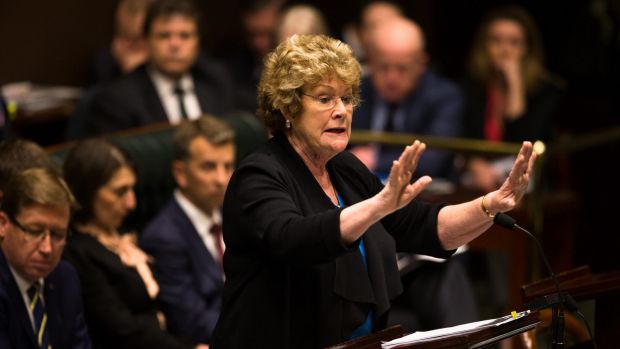
A series of scandalous hospital errors has severely damaged the public’s perception of the state’s health system and significantly eroded the popularity of the Baird government.
An exclusive Fairfax/Reachtel poll has revealed four in five people harbour lingering fears over the state of the sector as a result of the systemic stuff ups, putting pressure on the future of Health Minister Jillian Skinner.
The poll reveals a four percentage point swing against the NSW government and a majority of respondents said they preferred Opposition Leader Luke Foley as premier to Mike Baird.
The fallout of the nitrous oxide mix up at Bankstown-Lidcombe Hospital that led to the death of a newborn baby, and chemotherapy underdosing controversies at two other state hospitals have left a sour taste in voters’ mouths, the survey of more than 1600 residents found.
The poll found 79 per cent of respondents were concerned about the state of the NSW health system as a result of the scandals.
More than 42 per cent said they were “very concerned”, and a further 37 per cent said they were “somewhat concerned”, the poll conducted on Thursday found.
The results have confirmed the state of the hospital system as a crucial political battleground. Health was the most important issue to voters, above economic management and education, a Fairfax Ipsos poll in the lead-up to the March 2015 election found.

The overwhelmingly negative response to the government’s handling of health crossed the political divide. Almost one-third of Liberal voters said they were very concerned, as well as 56 per cent of Labor voters and 44 per cent of Greens supporters.
Responding to the poll on Saturday, Ms Skinner said “the public can be assured the health system is safe”.
The Baird government has been forced to repeatedly defend the NSW health system and rejected calls for Ms Skinner to resign.
“The Premier has total confidence in the health minister,” a spokesman for Mike Baird said on Saturday afternoon after Mr Foley called for Ms Skinner to be immediately dumped from the portfolio earlier in the day.
The family of the baby boy who died after being mistakenly given nitrous oxide via an oxygen outlet said Ms Skinner had compounded their suffering by releasing the report into the errors without allowing them time to process its findings.
She was earlier criticised for attending the theatre the night news broke of the gas mix-up.
The critical failures focused intense scrutiny on the health minister and NSW Health’s crisis mode response.
But the state’s health system faced ongoing deficiencies that demanded the ministry’s attention, said Australian Medical Association NSW President Dr Brad Frankum.
“People are very concerned about the public health system, and they should be,” he said.
Despite the state government’s massive investment in infrastructure and redevelopment, many hospitals across the state are inadequately staffed.
“It means that people are at risk of being overworked and burnt out and making mistakes,” Dr Frankum said.
The state hospitals’ bed occupancy rate was “unacceptably high”.
He said the health ministry continued to provide the public with misleading figures by releasing the overall occupancy data, which included short stays, neonatal and maternity beds
“The real rub is that elderly, acute patients, and adult beds in many hospitals are fully occupied.
“There’s bed block in emergency departments and a wilful ignorance in this higher health system administration, I believe, about these issues and the need to expand the bed base,” he said.
The number of beds relative to the NSW population has decreased incrementally since 2005, an AMA analysis of NSW Health statistics found.
There were fewer beds available in 2013-14 than in the previous five years.
“We’ve got to stop disguising figures about bed occupancy rates in our hospitals. It’s misleading and the cause of a lot of the stress in the hospital system,” he said.
“If there is a constant pressure for turnover and getting people out as soon as possible inevitably people are looking to cut corners and discharge earlier than they’re comfortable with,” he said.
But Dr Frankum said it was drawing a long bow to hold Ms Skinner directly responsible for the recent hospital scandals.
“I don’t think we can blame the minister for these things … what we need to keep an eye on is how she responds and facilitates improvements.
“It’s crucial that the system learns from these mistakes,” he said.
He congratulated Ms Skinner on successfully allowing local health districts and clinicians more autonomy over health services, as well as her work to reduce the system’s bullying work culture.
And despite a significant increase in the volume of presentations (up 28 per cent in five years), the median time patients have spent in the ED has improved, dropping from three hours and 12 minutes to two hours and 40 minutes between 2011 and the first quarter of 2016.
The scandals, coupled with controversial policy decisions and the inquiry into Liberal Party donation rorting, have seen support for the NSW government collapse, with the latest poll showing Labor and the Coalition polling 50-50 on a two-party preferred basis.
